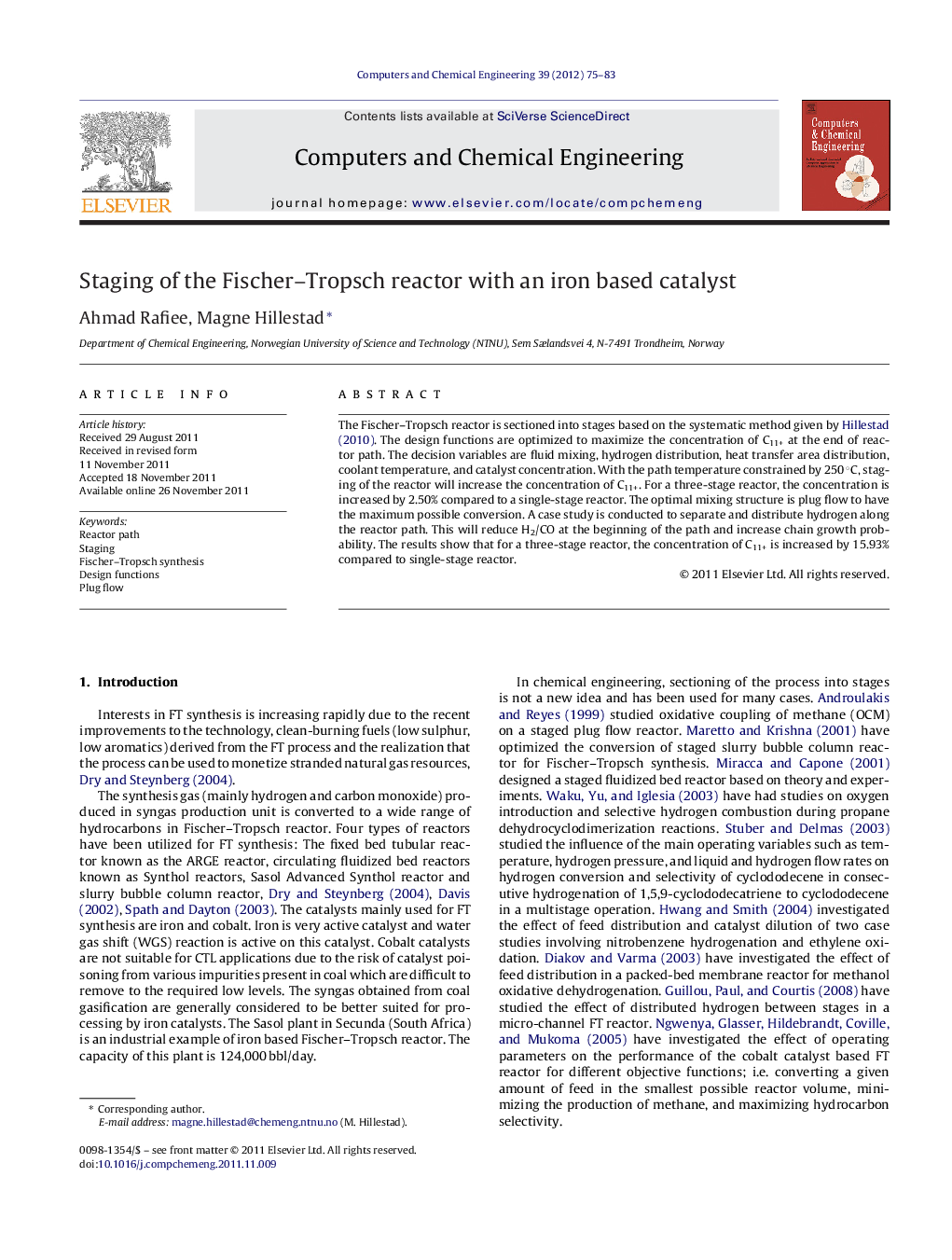| Article ID | Journal | Published Year | Pages | File Type |
|---|---|---|---|---|
| 172880 | Computers & Chemical Engineering | 2012 | 9 Pages |
The Fischer–Tropsch reactor is sectioned into stages based on the systematic method given by Hillestad (2010). The design functions are optimized to maximize the concentration of C11+ at the end of reactor path. The decision variables are fluid mixing, hydrogen distribution, heat transfer area distribution, coolant temperature, and catalyst concentration. With the path temperature constrained by 250 °C, staging of the reactor will increase the concentration of C11+. For a three-stage reactor, the concentration is increased by 2.50% compared to a single-stage reactor. The optimal mixing structure is plug flow to have the maximum possible conversion. A case study is conducted to separate and distribute hydrogen along the reactor path. This will reduce H2/CO at the beginning of the path and increase chain growth probability. The results show that for a three-stage reactor, the concentration of C11+ is increased by 15.93% compared to single-stage reactor.
► The iron based catalyst Fischer–Tropsch (FT) reactor is sectioned into stages. ► The design functions are optimized to maximize the concentration of C11+ (wax) at the end of reactor path. ► Staging of the FT reactor will increase the production rate of wax by 2.50% going from one to three stages. ► Hydrogen is separated and distributed hydrogen along the reactor path and wax concentration is increased by 15.93% going from one to three stages.
